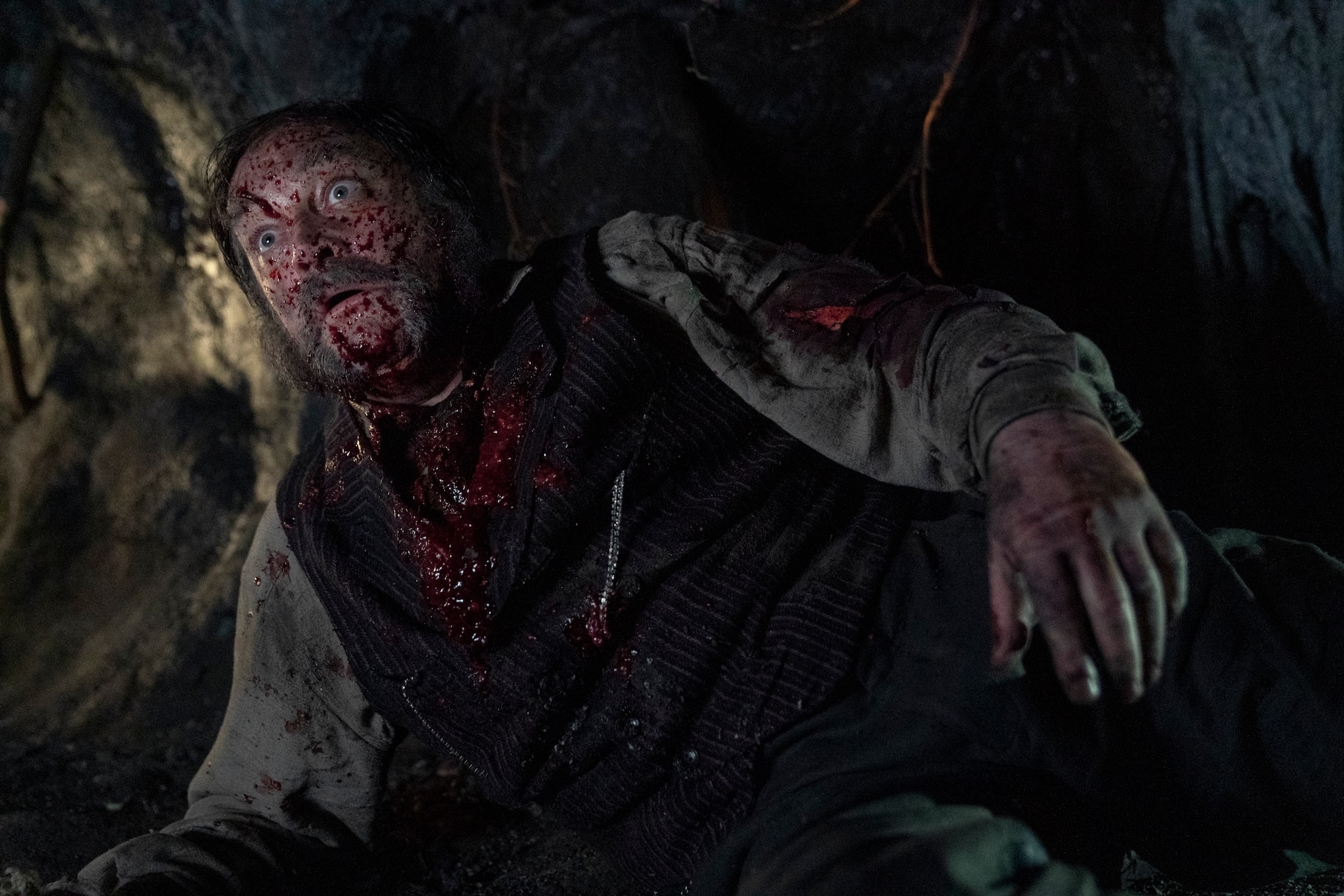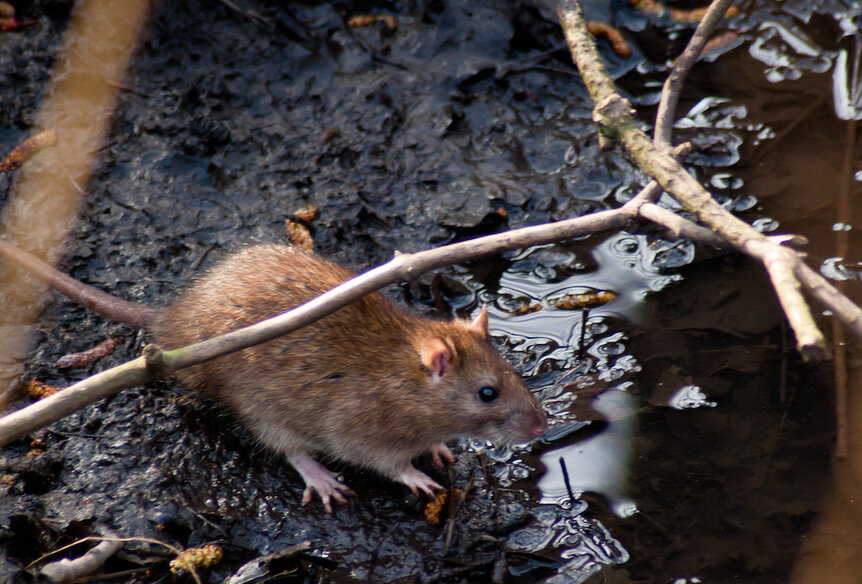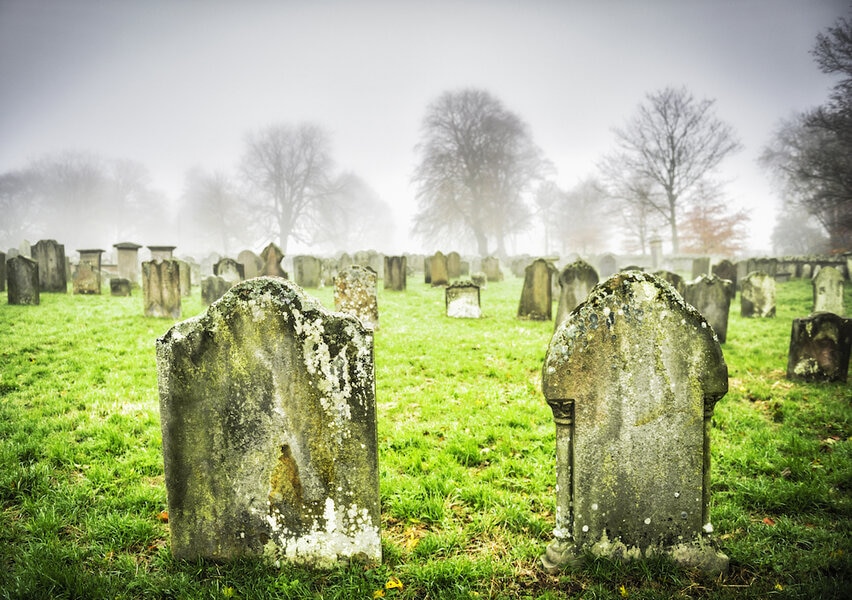Create a free profile to get unlimited access to exclusive videos, sweepstakes, and more!
Are 'Cabinet of Curiosities' Graveyard Rats coming for your corpse when you die?
Guillermo del Toro’s new show features man-eating rats. Is there any science backing his horrifying thought?

Humans have a long and complicated history with rats. Throughout history, rats have eaten our food and transmitted diseases, so it makes sense that there’d be a certain amount of contention between us. Consequently, rats have become synonymous with insult. To be called a rat is to call your integrity into question, to align you with the lowdown, the dirty, the dangerous.
This attitude shows up in our stories as well, with the notable exceptions of Remy and Splinter, rats rarely take the hero role. They play antagonist to heroic animated mice in The Great Mouse Detective and The Secret of NIMH and serve as an ordinary horror any time someone enters a sewer or cave onscreen. More recently, rats were the source of horror in an episode of Guillermo del Toro’s Cabinet of Curiosities. Warning! Spoilers for the second episode, "Graveyard Rat," ahead.
We open on a grave robber named Masson who is strapped for cash and under the thumb of some shady characters. He needs money fast, but lately rats have been chewing through the coffins and looting the corpses before he can get to them. When a wealthy decedent is buried and the rats steal the body and all the valuables along with it, Masson descends into their tunnels, sealing his fate beneath several feet of soil. A horrifying premise, but how much danger do rats really pose to humans?
<iframe width="560" height="315" src="https://www.youtube.com/embed/uQQxwgbUSqg" title="YouTube video player" frameborder="0" allow="accelerometer; autoplay; clipboard-write; encrypted-media; gyroscope; picture-in-picture" allowfullscreen></iframe>
RATS IN FOLKLORE
Rats are the kind of creature that, despite actually being intelligent and nurturing, almost demand to be made the subject of myth. For centuries we’ve imagined rats becoming grotesque creatures inside their underground nests.
In 16th-century Germany, people told stories of rat kings, terrible conglomerations of multiple rats all with their tails bound together. These stories may have started as insulting allegories for powerful people. The idea was that older rats would intentionally bind themselves to younger rats and take the food they collected. It’s not difficult to see how this image of the old and bloated parasitic rat living off the efforts of its community might be applied to those in power.
As fantastical as rats with knotted tails sounds, it has actually been documented, and it doesn’t appear to be driven by resource inequality. According to Cosmos Magazine, sticky substances like sap or gum are likely culprits, and a similar phenomenon has been observed in other rodents.
In the episode, when Masson gets underground, he discovers not only a colony of rats but a gigantic, hairless, queen rat large enough to eat him for a snack. This too has roots in legend and myth. In the Mapuche culture — the indigenous peoples of south-central Chile and southwestern Argentina — there are stories of Colo Colo, a giant malevolent rat creature. It is said that Colo Colo enters your house at night to feed on your saliva, sapping you of energy.
In London, there is a myth of a shapeshifting rat who hung out at the water’s edge, granting men good luck or misfortune, leading either to riches or death, according to her whims. In modern times, that myth continues without quite as many fantasy elements. In major cities, stories abound of giant rats living in the sewers, gorging themselves on the constant deluge of waste we dump down the pipes. These stories appear to be pure imagination.
While giant rats have roamed the Earth, they’ve been extinct for about a thousand years and only got up to about the size of a house cat. Not quite large enough to drag you to an underground demise. And, modern rats aren’t even that big. Research suggests they cap out at about a pound and a half and most come in at about a third of that weight. For all the grave robbers out there, you’re probably safe from giant rats, pending further evidence.
WHAT ABOUT THE DEAD?
There are a lot of things that suck about being dead, but being eaten by other creatures is pretty near the top of the list. Most of us are probably pretty comfortable with the idea of bacteria and bugs breaking down our bodies after we die — return to earth, and all that. Still, we’d probably prefer to avoid becoming snacks for rats. The question is whether rats are capable of chewing through a casket to loot your body and your bling.
That seems to come down to what your casket is made of. Rats are prodigious chewers and will bite through anything they can. A wooden casket likely isn’t going to keep rats out, at least not over the long term. Over a long enough stretch the wood will rot and provide easy access to any creature who wants in, rats included. Even without rotting, rats are well known for chewing through wood to get at what’s on the other side.
If your casket is metal things get a little tricker. Rats can and do chew through soft metals like aluminum, copper, or gold, but most caskets are covered in stainless steel which is too tough for rats to get through. If your body is surrounded by a hard enough metal, or by stone, you’re probably safe from rats. However, if a rat can get to your body they probably will.
In 2002, rats got into the long-term storage space at the Los Angeles County coroner’s office and chewed on at least twelve bodies. The county uses this space to hold bodies waiting to be identified or claimed by next of kin, and many had been in storage for anywhere between several months and several years. According to the Los Angeles Times, the rats reportedly got into the building through a hole in the wall and took advantage of the comparatively easy access long-term storage granted them.
Those bodies weren’t buried. Surely that was a special case, right? Maybe. A report from the Stamford Advocate in 2018, documents the discovery of human remains, including bones, a tooth, and part of a human skull found in a local cemetery. According to Stamford police the remains were disinterred by rats who tunneled underground and removed them from rotted wooden caskets. They were apparently chewing on the bones for calcium.
Depending on what you choose to do with your body after your death, there’s a nonzero chance that your remains might be nibbled on by rats in the near or distant future. At least they’re sure to be normal-sized.
All eight episodes of Guillermo del Toro’s Cabinet of Curiosities are streaming on Netflix.
Looking for more scares? Check out the numerous horror movies over on Peacock.




























